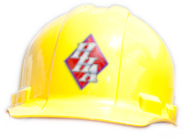As fall ends and winter snowballs in, so do increased heating costs. There are many ways to save on your electric bill this winter, and that includes weatherstripping.
What is weatherstripping?
Weatherstripping includes any caulking, adhering, or otherwise sealing that keeps the cold air where you want it: outside.
Taking the time, and honestly, costs, to keep your home warm and safe from the elements can sustain the longevity of your home and your central air system, which means more money in your pocket long-term. However, you want to ensure you select the proper material for the appropriate locations.
Materials matter
Depending on where the cold air is blowing in, how much traffic goes through that area, and what materials are already there, the material for weatherstripping may not be obvious. There are a variety of weatherstripping types, including:
● Tension seal – typically using a combination of vinyl, bronze, copper, aluminum, or stainless steel
● Felt
● Foam
● Tape
● Vinyl
● Magnetic
● Silicone
Not all materials are created equal! The U.S. Department of Energy specifies best uses for each of the recommended materials based on location, cost, and advantages.
Weatherstripping by price
Low price point: For windows, the least expensive option is usually nonporous or foam-included tape. This is the most common, easiest fix for windows, as it’s easy to install and can be found in most home improvement stores.
Medium price point: For a few extra dollars, you can spring for reinforced foam, which not only keeps cold out, but has been proven to withstand intense wind.
High price point: If you want the best of the best, interlocking metal channels or Mylar fins are incredibly durable, top-of-the-line sealants. These may be costly, but you won’t have to replace them every season, if at all.
Want more information about weatherstripping? Curious to see where cold air is leaking into your home? Call Harbin Heating and Air today to have a technician inspect your home and offer cost-efficient solutions customized for you.


